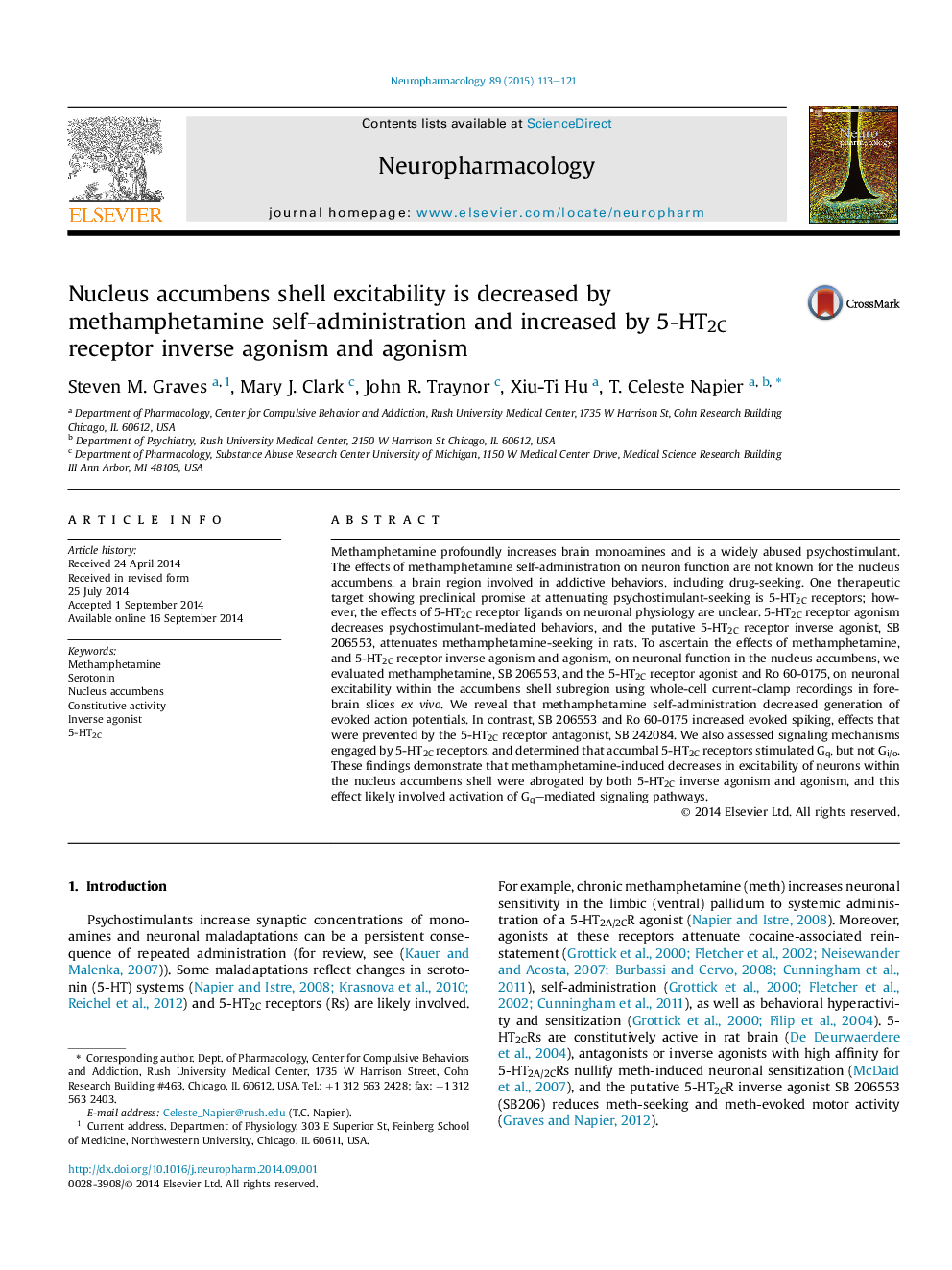| کد مقاله | کد نشریه | سال انتشار | مقاله انگلیسی | نسخه تمام متن |
|---|---|---|---|---|
| 5814260 | 1556625 | 2015 | 9 صفحه PDF | دانلود رایگان |

- Methamphetamine self-administration decreased excitability of accumbens shell neurons.
- 5-HT2C receptor agonism increased accumbens shell excitability.
- 5-HT2C receptor inverse agonism increased accumbens shell excitability.
- 5-HT2C receptors in the accumbens engage Gi/o but not Gq proteins.
Methamphetamine profoundly increases brain monoamines and is a widely abused psychostimulant. The effects of methamphetamine self-administration on neuron function are not known for the nucleus accumbens, a brain region involved in addictive behaviors, including drug-seeking. One therapeutic target showing preclinical promise at attenuating psychostimulant-seeking is 5-HT2C receptors; however, the effects of 5-HT2C receptor ligands on neuronal physiology are unclear. 5-HT2C receptor agonism decreases psychostimulant-mediated behaviors, and the putative 5-HT2C receptor inverse agonist, SB 206553, attenuates methamphetamine-seeking in rats. To ascertain the effects of methamphetamine, and 5-HT2C receptor inverse agonism and agonism, on neuronal function in the nucleus accumbens, we evaluated methamphetamine, SB 206553, and the 5-HT2C receptor agonist and Ro 60-0175, on neuronal excitability within the accumbens shell subregion using whole-cell current-clamp recordings in forebrain slices ex vivo. We reveal that methamphetamine self-administration decreased generation of evoked action potentials. In contrast, SB 206553 and Ro 60-0175 increased evoked spiking, effects that were prevented by the 5-HT2C receptor antagonist, SB 242084. We also assessed signaling mechanisms engaged by 5-HT2C receptors, and determined that accumbal 5-HT2C receptors stimulated Gq, but not Gi/o. These findings demonstrate that methamphetamine-induced decreases in excitability of neurons within the nucleus accumbens shell were abrogated by both 5-HT2C inverse agonism and agonism, and this effect likely involved activation of Gq-mediated signaling pathways.
Journal: Neuropharmacology - Volume 89, February 2015, Pages 113-121